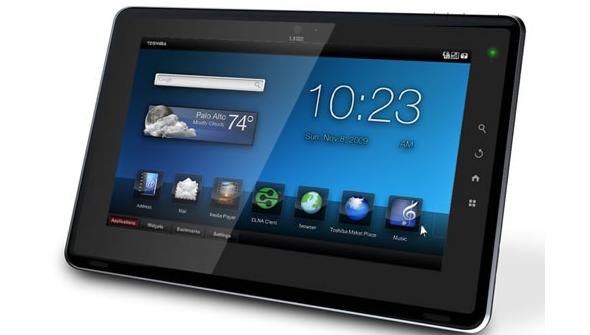Last Updated on February 25, 2024 by Mathew Diekhake
If you own one of these tablet there is a strong chance that you want to get more out of it. The Toshiba Folio 100 runs on Android 2.2 and has received no more official support even though it’s more than capable of taking on the challenge. Follow the guide below to get your Toshiba Folio 100 rooted.
The Toshiba Folio has been around for a few years now, but we still have the same trusty way to gain root access using a OneClick tool. We prefer the One-Clicks when they are available since they are quicker and offer Android users a hassle-free experience most of the time. Super-One-Click is available for heaps of different Android-based devices. Therefore, even though we don’t know of many Toshiba’s, we do still realize that this method is reliable.

Since creating the root access is a process that’s made by third-party developers and not the official OEM the handset came from, it’s important to backup the data before starting. That way, if something goes wrong, you can restore the device, along with your data. Without any restore point saved to a backup, you cannot get any of the old data back again.
Gaining root access is not recommended by Google or the manufacturer, thus you are breaking any warranty terms and agreements by following this guide. That means you will not be able to send the Toshiba Folio away for any free repairs. You should have no worries sending it away for repairs if you are willing to pay the cost.
Please note:
- Before you start you must ensure the following:
- You have backed up all personal data on your device.
- You are completing this procedure on a Windows 7 PC.
- You have downloaded the USB Drivers for Windows Package from the SDK manager. To achieve this you will need to have Android SDK and ADB set up.
- You have at least 80% battery life on your device.
- You have enabled USB debugging on your device. To Achieve this head to ‘Settings’ > ‘Applications’ > ‘Development’ > ‘USB debugging’ and select the appropriate box.
Rooting the Toshiba Folio 100 with SuperOneClick
- Before you begin you will need to ensure USB debugging is enabled and your device can be detected by your PC. To achieve this follow the following steps.
- -Head to ‘C:/Users/%username%/AppData/Local/Android/android-sdk/extras/google/usb-driver’, when you locate this file, select the ‘android-winusb.inf’and open it in an application such as notepad so you are able to edit it.
- (The %username% will appear as the Windows username you nominated during the Android SDK install) .
- -Locate the [Google.NTx86] section and type the following to the end of it:
- ;NVIDIA Tegra
- %SingleAdbInterface% = USB_Install, USB\VID_0955&PID_7000
- %CompositeAdbInterface% = USB_Install, USB\VID_0955&PID_7100&MI_01
- -Locate the [Google.NTamd64] section and type the following to the end of it:
- ;NVIDIA Tegra
- %SingleAdbInterface% = USB_Install, USB\VID_0955&PID_7000
- %CompositeAdbInterface% = USB_Install, USB\VID_0955&PID_7100&MI_01
- -Once you have added the code to both sections, save and close.
- -Now you need to press the ‘Windows’ and ‘R’ keys, this will open the Run box where you need to type ‘cmd’. Press ‘Enter’ and you will be presented with a command prompt window.
- -Type : echo 0×955 >> “c:\users\%username%\.android\adb_usb.ini
- Again replacing %username% with your windows username.
- – Now you can reboot your PC after you close the window.
- We can now move onto the root. Download the following file:
- SuperOneClickv2.3.3-ShortFuse.zip
- Once downloaded you will need to extract it to your desktop.
- Again ensure USB debugging is enabled on your device be following the procedure we mentioned earlier.
- Using the USB cable, connect your device to your PC. Windows 7 may start installing drivers. Doing this is fine, just wait for it to finish.
- From the folder you extracted to your desktop earlier, locate the SuperOneClick.exe and double-click on it to launch it.
- Now click on the ‘Root’ option.
That’s it, your device is now rooted. To unroot the device simply:
- Ensure USB debugging is enabled.
- Connect your device to your PC via USB.
- Launch SuperOneClick.exe.
- Select ‘Unroot’.
